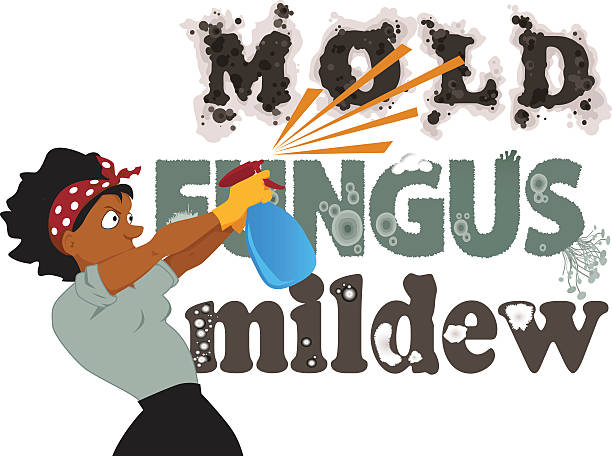Why are we so afraid of mold and mildew? At first, they might just be something behind the sink, under house siding carpet, or around the edge of the bathroom wallpaper that can be easily overlooked; however, they could quickly take over your house and eat away your health if no action is taken to treat them.
In this blog, we’ll talk about what mold and mildew are and how they form, the issues they may cause, and lastly, how we can remove them and prevent their growth.
Whare mold and mildew are
It’s easy for people to mix up mold with mildew. Mold and mildew are both fungi that develop due to excessive, unchecked moisture in confined spaces. They grow in a wide range of temperatures, with some strains especially thriving at higher temperatures. Both of them can cause damage the house and cause health issues.
However, there are some differences between the two that people should know before treating the problem. Mold tends to have a higher profile and can even become fuzzy, while mildew is always flat. Mold exhibits darker colors such as deep green and black; mildew may begin as white, then turn brown or gray. Mildew converts to a white, then turn brown or gray. Mildew converts to a white, powdert substance; mold never does.
Mold
- Green, red, or black
- Often confused for dirt
- Darker shades
- Fuzzy
Mildew
- White/gray in early stages
- Turns down
- Flat
- Powdery
How mold and mildew form
Mold and mildew need the right conditions for growth. To begin, they need mold spores as a type of seed. Spores grow with three factors: food (such as soil), water, and oxygen. Decreasing any of these factors will cause mold and mildew to die.
Spores land on the surface, germinate, and grow. Molds and mildew may start as early as 24 to 48 hours after the surface has been dampened. Mildew’s white-grey spots spread outward, not upward, remaining on the surface. Mold, though, eats into its base – which makes it harder to move – and sometimes grows upward.
What the effects of mold & mildew are
Mold and mildew have different effects on surfaces where they grow and the people who live in their vicinity. For example, mildew can harm the food it grows on, but it doesn’t typically leave lasting damage to other surfaces, such as tile floors or bathroom mirrors. Additionally, anyone who inhales mildew spores may experience headaches, runny noses, skin rashes, etc. Mildew can cause some health concerns.
However, the effects of mold tend to be more serious. Mold can damage entire structures, including houses and vehicles, as it needs to consume something to survive. Mold can also cause long-term health problems, including respiratory issues, heart problems, joint pain, migraine, fatigue and depression. In addition, anyone who has a mold allergy may experience congestion, sneezing, and irritation of the eyes, throat and skin. This is why it’s important to prevent or treat mold as soon as possible.
How to prevent and treat mold & mildew
How to prevent mold & mildew:
- Keep things clean
- Increase ventilation in the affected area with exhaust fans
- Install dehumidifiers to reduce humidity
- Ensure that sources of natural ventilation such as windows, or mechanical venting such as HVAC vents remain open and unblocked
How to treat mold & mildew
With surface mildew, what it usually takes is a mildew killer such as Vital Oxide and a scrub brush to tackle the issue. Mold infestations can be a bit trickier to remove.
However, before cleaning mold and mildew, always wear breathing protection, waterproof gloves, and protective eyewear.
1.Remove or dispose of unwanted material
Begin with anything that can be removed or disposed of, such as wallpaper, rotted drywall, wood, and fabrics.
2. Mist with clean water and scrub
With mildew or dry mold, mist the remaining area with clean water to prevent the spores from being released into the air. Remove all visible mold using a scrub brush and rinse with water.
3. Apply mold & mildew killer
Spray the affected area with an effective mold killer such as Vital Oxide. It is a Health Canada and EPA registered hospital grade disinfectant, as well as a heavy-duty mold & mildew killer. It can eliminate mold and mildew on a molecular level – neutralizing spores and inhibiting fungal growth – without damaging the surfaces treated. Spray full-strength Vital Oxide from a distance of 12 inches until visibly wet. Let it air dry.

